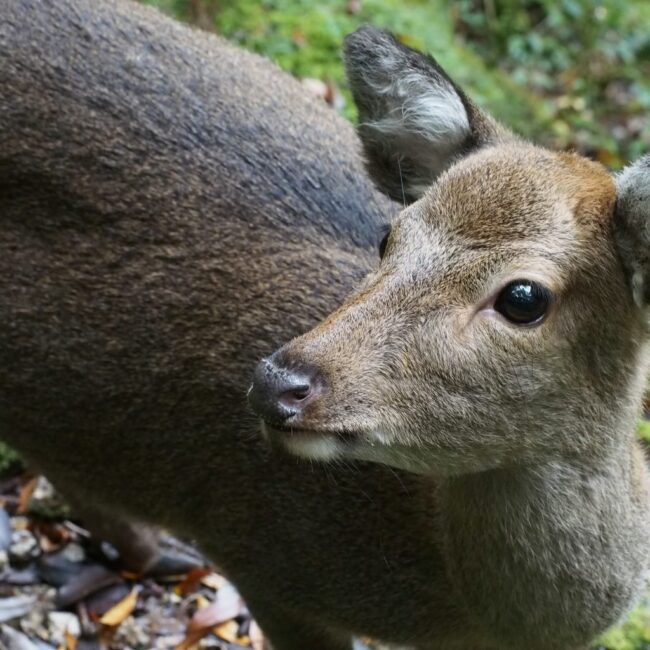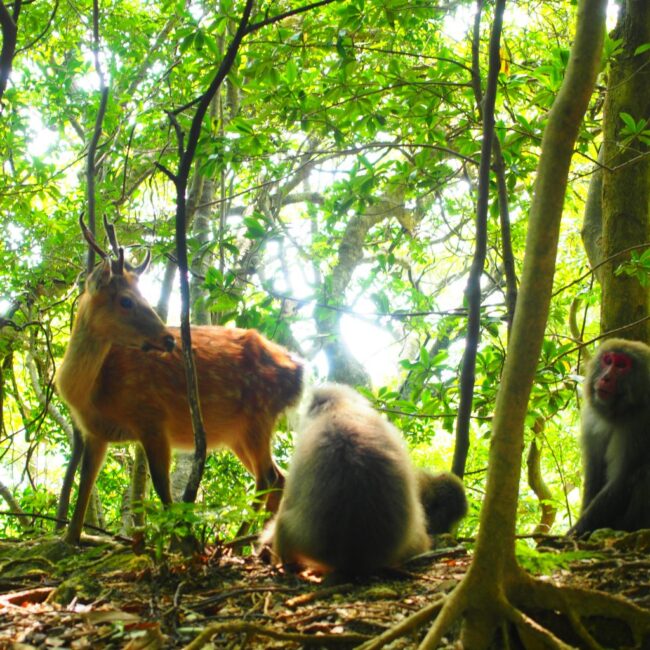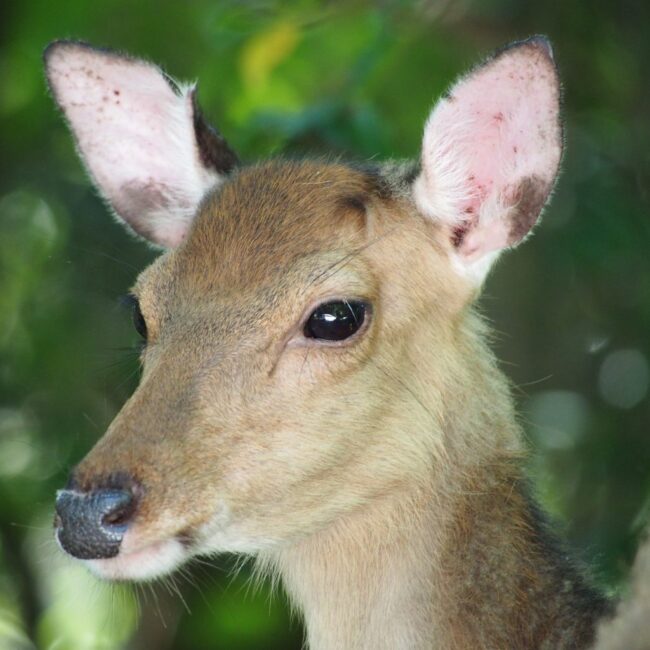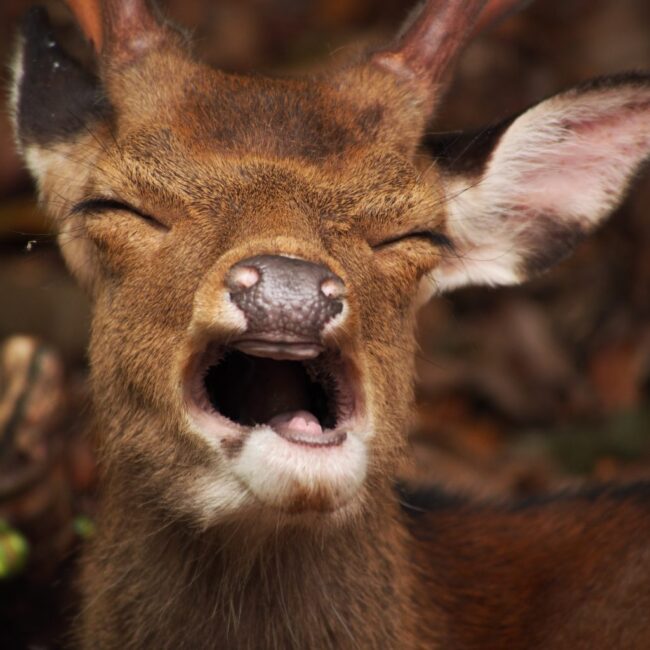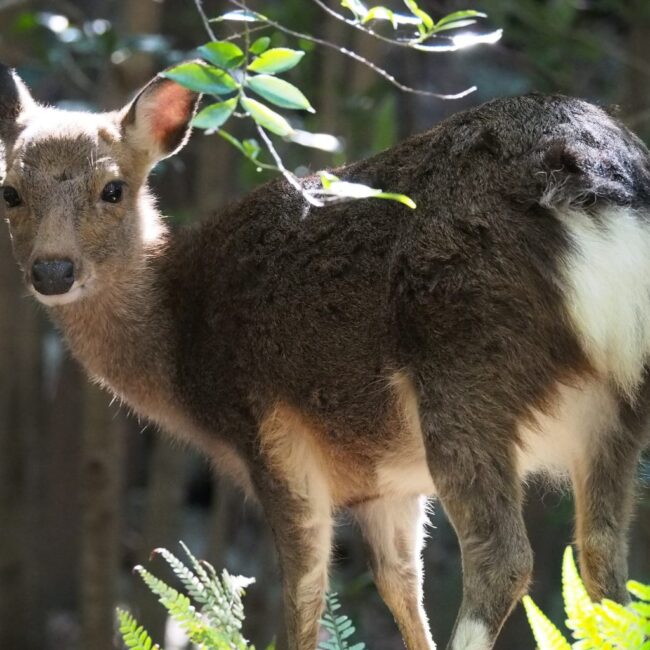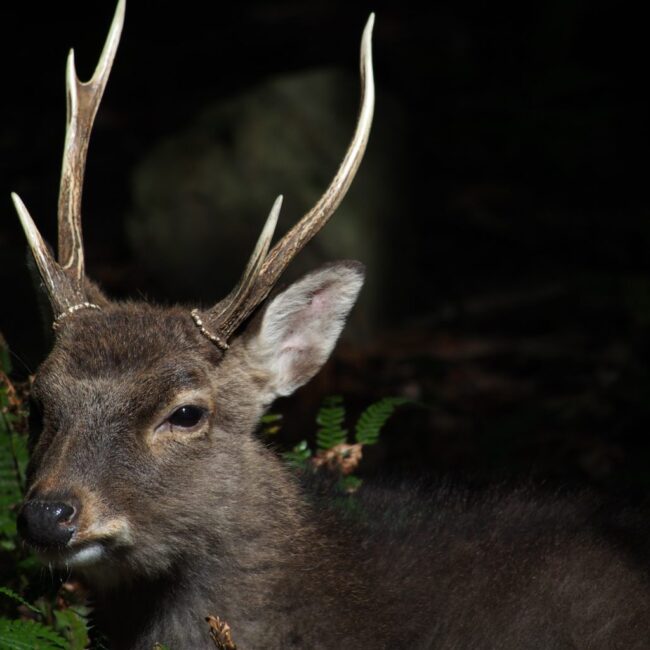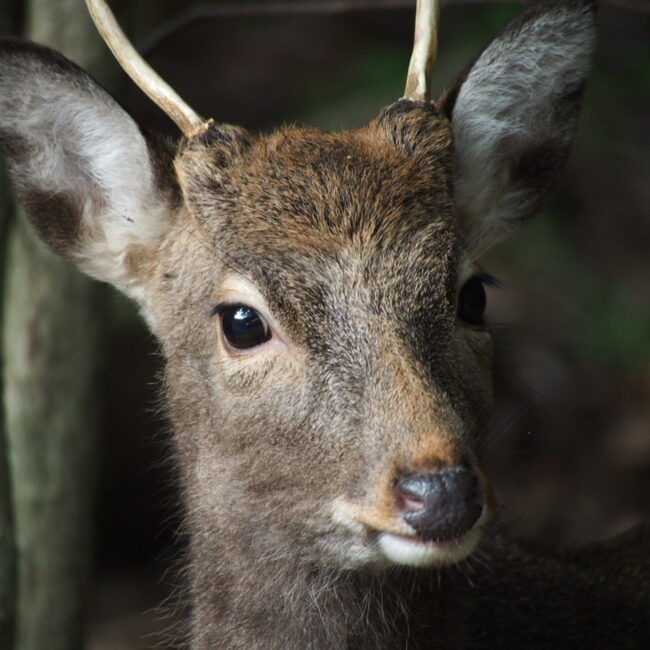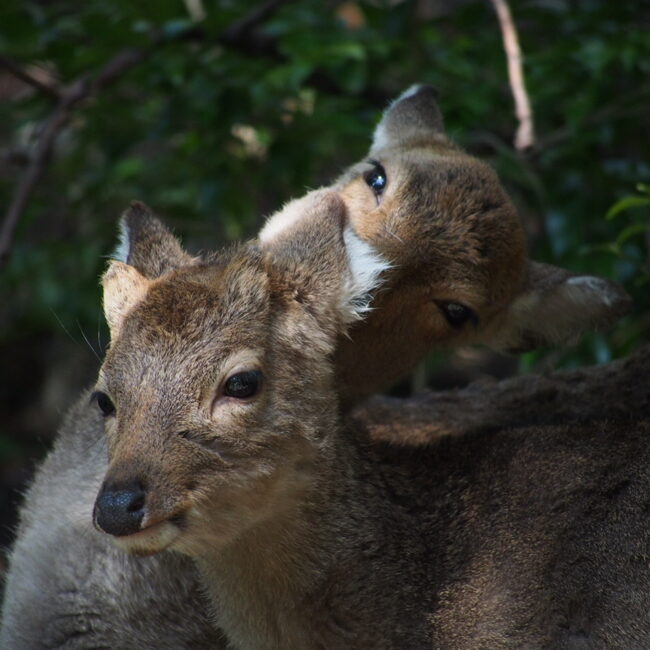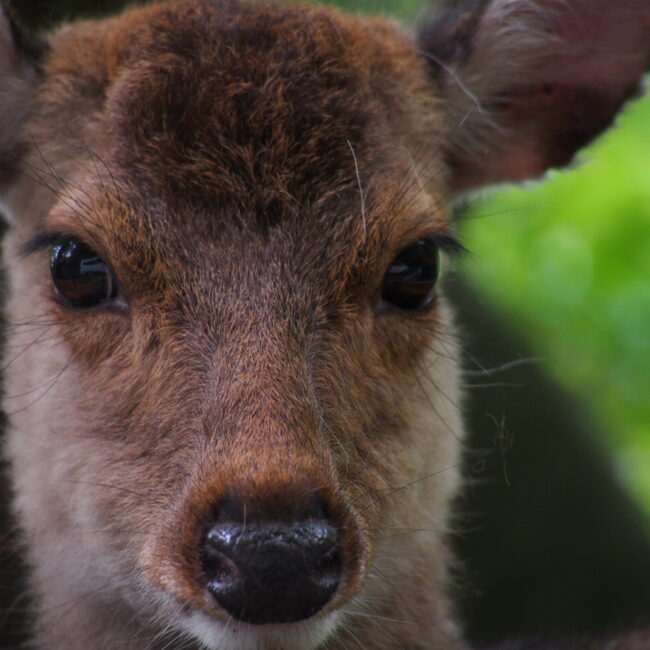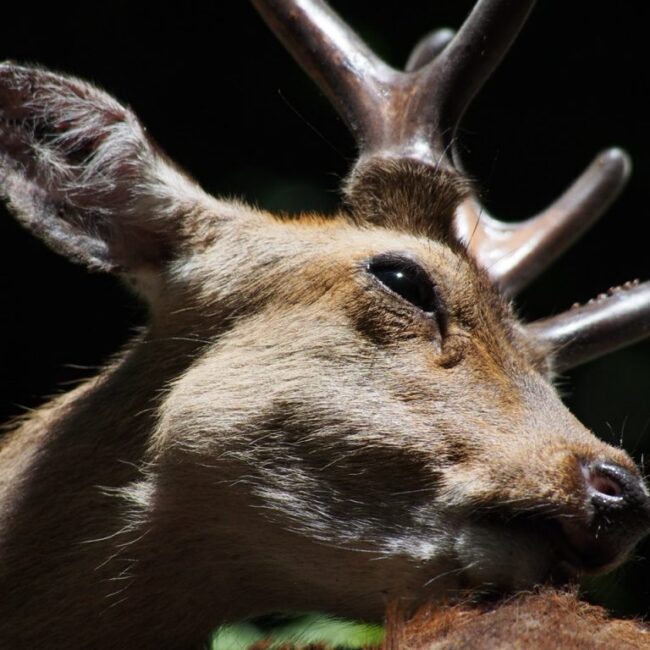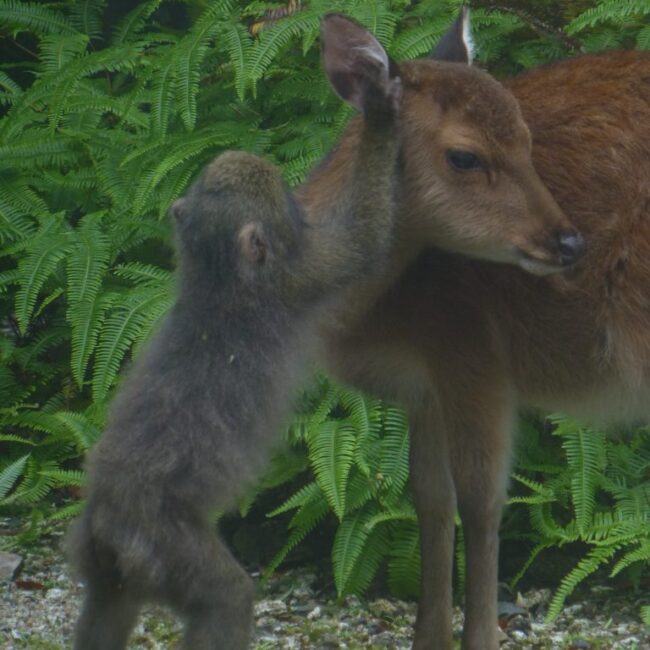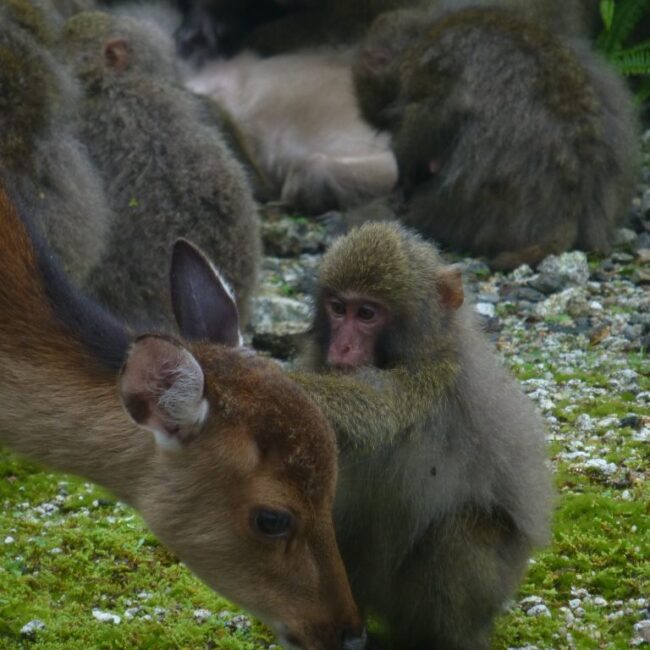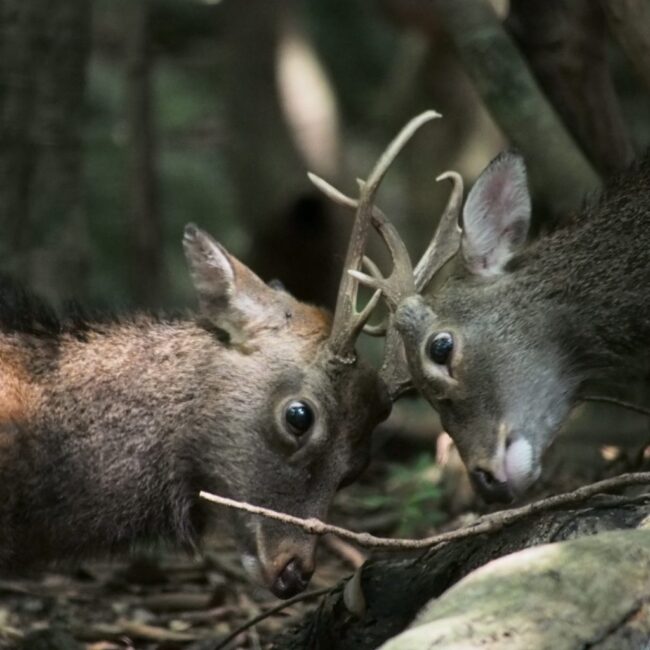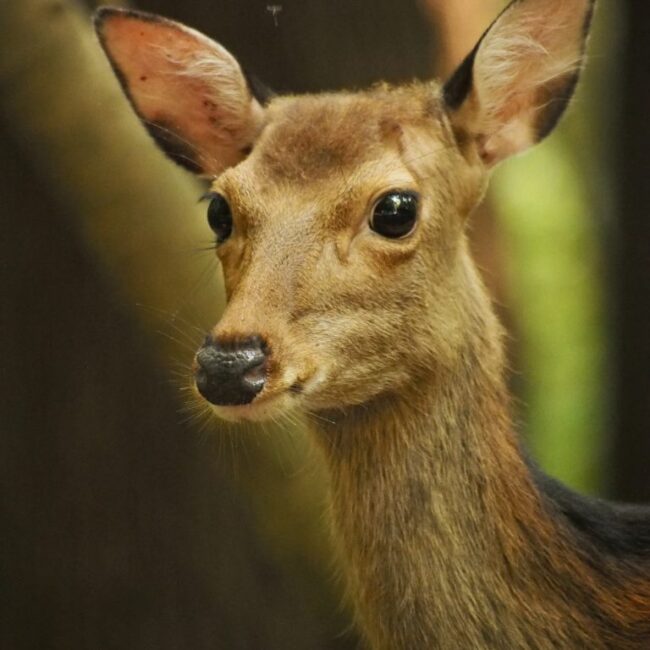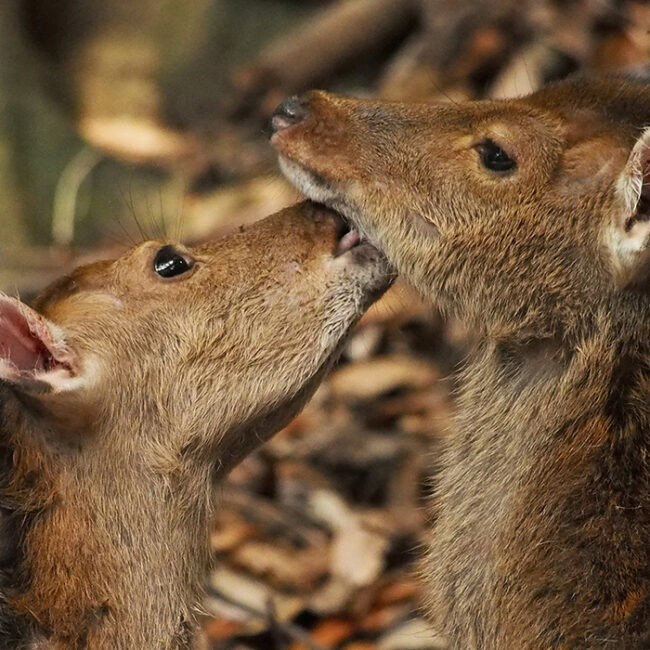THE NATURE
YAKUSHIMA DEER
The Gods of the forest
About “Yakushika”
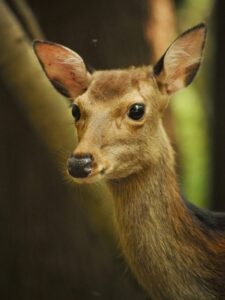 The Yakushima deer are certainly photogenic and don`t they know it! Although a wild animal on Yakushima, they appear to be unconcerned by the presence of humans – that is until you get about 5 meters from the deer and then they flee. Unlike the annoying deer of Nara and Miyajima, the Yakushima deer are content to forage for their own food. There is a very strong island policy of not feeding the animals (ie macaque & deer) and so they make no connection with food when they come across humans.
The Yakushima deer are certainly photogenic and don`t they know it! Although a wild animal on Yakushima, they appear to be unconcerned by the presence of humans – that is until you get about 5 meters from the deer and then they flee. Unlike the annoying deer of Nara and Miyajima, the Yakushima deer are content to forage for their own food. There is a very strong island policy of not feeding the animals (ie macaque & deer) and so they make no connection with food when they come across humans.
The Yakushima deer can be seen all over the island: from the coastline to the mountain tops. The estimated deer population on Yakushima fluctuates between 10,000 – 20,000. In 2014, the deer population was around 19,000, but their numbers have decreased in recent years. To put this figure into perspective, the human population on the island is around 11,000 in the year 2025. There were large scale culls in 2015 – 2017. In 2015 around 4,000 deer were culled. The island authority still encourages culling to try to keep their population at a sustainable level. The recommended population of deer for Yakushima to maintain an ecological sustainability is as low as 2,500 deer!
You may hear the term Yakushika which is the Japanese word for the Yakushima deer. Their scientific name is Cervus nippon yakushimae.
The Yakushima deer are a sub-species of the mainland deer (Cervus nippon). The Yakushima deer are smaller than the mainland species. An adult weight ranges from 19 to 37 kg – compare this to the mainland deer which is 49 to 80 kg. Another main difference between the species is that male Yakushima grow smaller antlers with only 3 prongs while the mainland deer antlers have 5 prongs. The deer have a long history on the island and they are often mentioned in some of the myths relating to Yakushima.
Should you book a YES Island Tour then the YES guide would be able to give you a lot of information about the macaques and the deer on the tour.
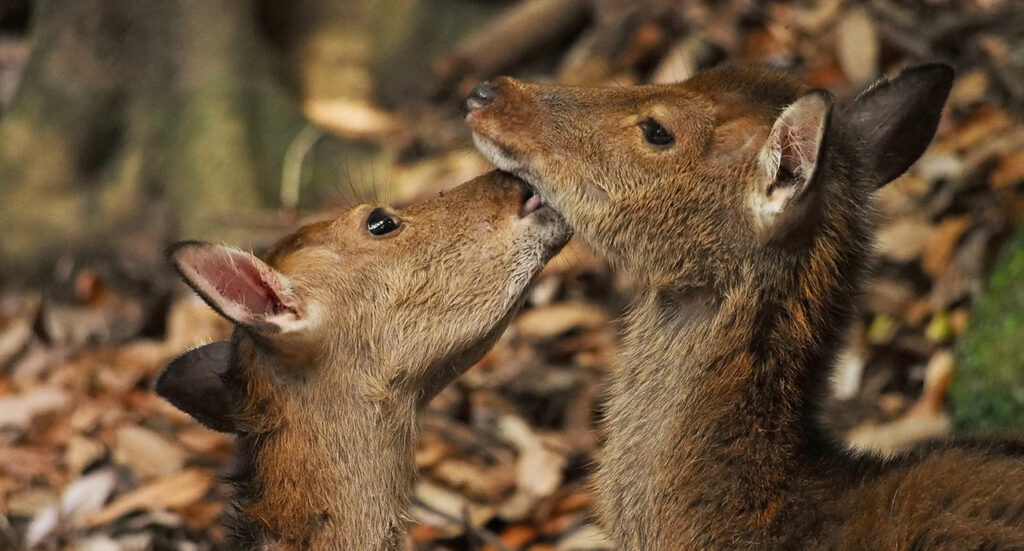
Deer watching precautions
Never offer food.
It will change the animal`s natural feeding behaviour, leading to more crop damage for the locals and it will also cause ill health for the animal. If the deer change their diet it will also effect the balance of the ecosystem.
Stop your car safely before watching the deer.
The western forest road is very narrow and winding. Drive slowly and if you see deer you want to watch, first safely pull in to the side of the road and pay attention to other vehicles that may want to pass.
Keep a safe distance of at least 10m from the deer.
It is much less stressful for the deer and safer for you if you observe them from the safety of your car. Remember you are entering their world and no matter how calm and peaceful they look they are wild animals and therefore unpredictable. We have known a deer stag use their antler to stab a human in the chest when the stag was under stress. The victim needed hospital treatment.
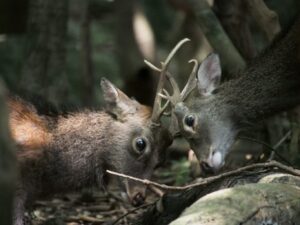 Another major cause for concern is that the more familiar the deer become with human interaction then the less afraid they become. This then leads them to feel safe about entering the human residential areas and commence eating the agricultural produce. The outcome is inevitable as the animals are either trapped or shot. Therefore, do the animals and the residents a favor by staying within your vehicle when observing the macaque.
Another major cause for concern is that the more familiar the deer become with human interaction then the less afraid they become. This then leads them to feel safe about entering the human residential areas and commence eating the agricultural produce. The outcome is inevitable as the animals are either trapped or shot. Therefore, do the animals and the residents a favor by staying within your vehicle when observing the macaque.
The BEST way to observe the Yakushima deer is with a YES guide. Without the detailed explanations given during a tour then you may as well be at a zoo.
Book a YES Island Tour which is usually the tour that has more chances of observing the animals of Yakushima.



